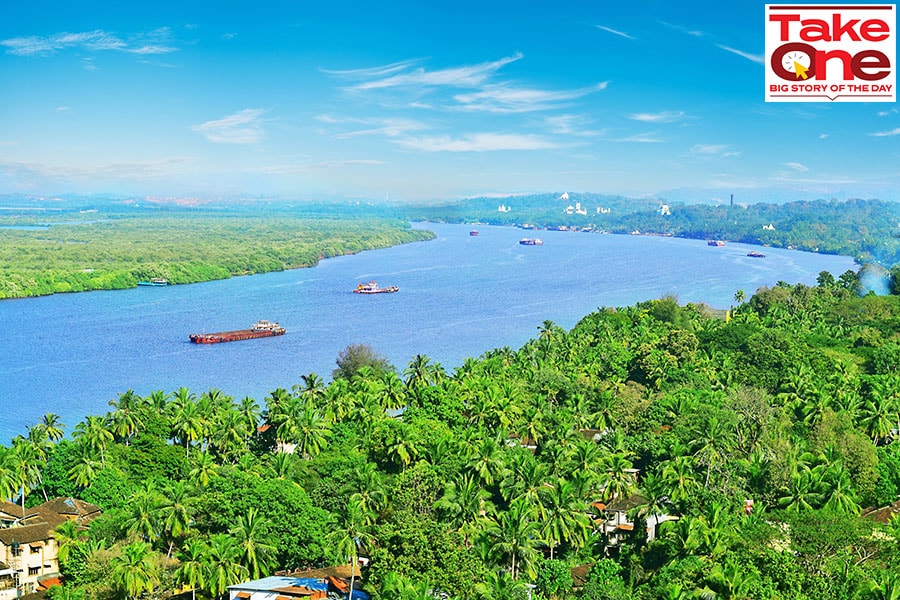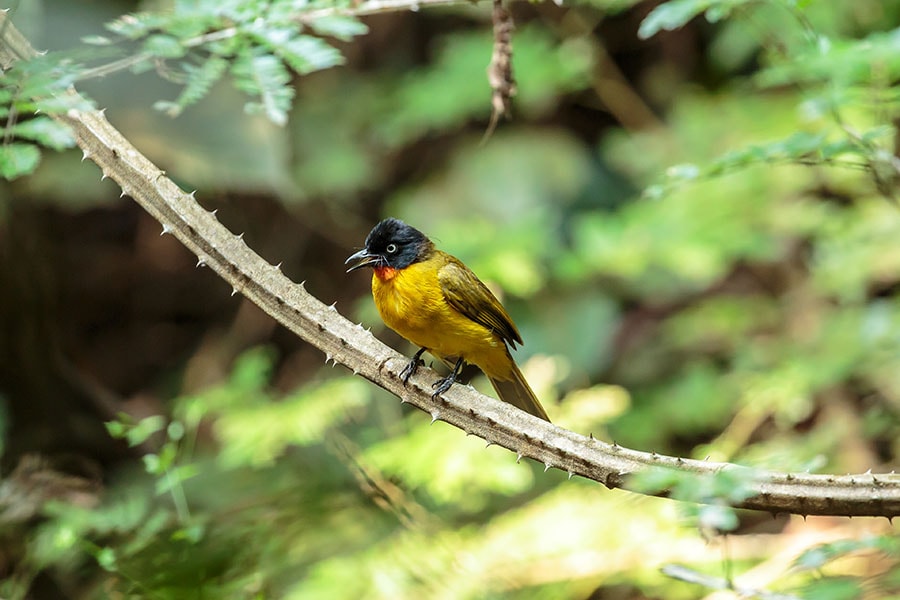
How can we protect the Mahadayi / Mandovi river?
Known as Mahadayi in Karnataka and Mandovi in Goa, diversion of the river's water could have catastrophic consequences on the region's biodiversity and climate
 The Mandovi River, often referred to as the ‘lifeline’ to Goa supports wildlife and humans and provides drinking water to millions of people along its 117 kilometers journey through Karnataka and Maharashtra, down to the Arabian Sea at Goa. Image: Vijay singh /Shutterstock
The Mandovi River, often referred to as the ‘lifeline’ to Goa supports wildlife and humans and provides drinking water to millions of people along its 117 kilometers journey through Karnataka and Maharashtra, down to the Arabian Sea at Goa. Image: Vijay singh /Shutterstock
The Mandovi river begins its life as the Mahadayi river in the Bhimgad sanctuary of Karnataka, in a series of swift springs and streams. Crisscrossed across a wet evergreen forest in one of the largest contiguous stretches of national parks and sanctuaries in the Western Ghats, the river with two names is legally protected at its source, Bhimgad, where efforts to protect an endemic and endangered species of bat—the Wroughton’s free-tailed bat—resulted in the notification of the Bhimgad sanctuary in 2011.
But not only endangered bats depend on the diverse ecosystem of the Mandovi River. The river supports wildlife and humans and provides drinking water to millions of people along its 117 kilometers journey through Karnataka and Maharashtra, down to the Arabian Sea at Goa. It is often referred to as the ‘lifeline’ to Goa which it supplies with fish, drinking water and water for irrigation.
Since water is regulated by state governments in India, the importance of water created a dispute between Karnataka and Goa, both of which depend on it for their own sustenance and prosperity.
The 2011 Notification of Bhimgad as a sanctuary provided legal protection just one year after decades-old water disputes between the States of Karnataka and Goa resulted in the setting up of the Mahadeyi Water Disputes Tribunal in 2010 through interventions in the Supreme Court of India.
Diversion of Mahadayi’s waters to supply about 30 water-scarce villages in Karnataka was first planned in 1970 and in 1989, when the Government of Karnataka planned to build across two major tributaries, Kalasa and Banduri to divert drinking waters to the Malaprabha River and supply Dharwad, Belgaum and Gadag districts with water for irrigation. The dispute escalated when farmers’ protests in Dharwad district resulted in police brutality against them in 2016 and the issue continues to remain contentious while both states claim the supremacy of their need for water.









